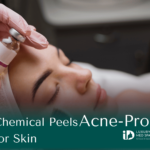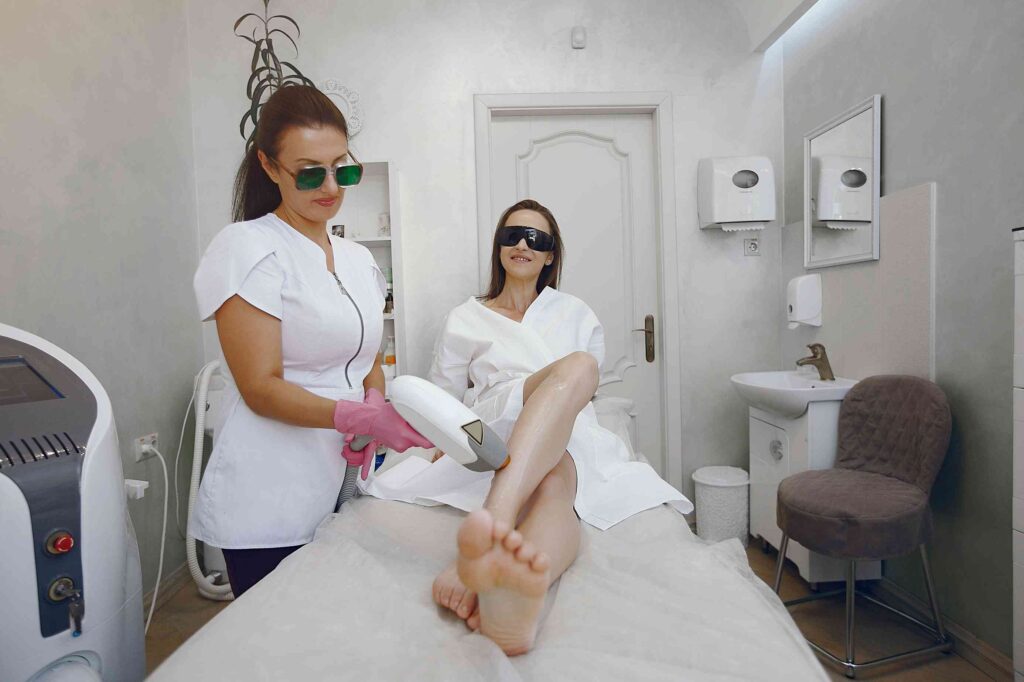Platelet-Rich Plasma (PRP) therapy and stem cell therapy are two cutting-edge treatments in the field of regenerative medicine that aim to promote healing, tissue regeneration, and relief from pain. Both therapies have been gaining popularity for their ability to address a range of musculoskeletal conditions, chronic injuries, and even aesthetic concerns. While both PRP treatment …
Platelet-Rich Plasma (PRP) therapy and stem cell therapy are two cutting-edge treatments in the field of regenerative medicine that aim to promote healing, tissue regeneration, and relief from pain. Both therapies have been gaining popularity for their ability to address a range of musculoskeletal conditions, chronic injuries, and even aesthetic concerns. While both PRP treatment and stem cell therapy are non-surgical alternatives, they differ in terms of their sources, mechanisms of action, applications, and the types of conditions they are best suited to treat. We will understand the differences between the two in this PRP vs Stem Cell Comparison can help you make an informed decision about which therapy might be most appropriate for your specific needs.
What Is PRP Therapy?
PRP therapy involves concentrating platelets from a sample of your own blood and injecting them into the affected area. Platelets are rich in growth factors that play a pivotal role in tissue repair and regeneration. The process typically includes:
- Blood Collection: A small amount of blood is drawn from your body.
- Centrifugation: The blood is processed in a centrifuge to separate the platelets from other blood components, resulting in a concentrated platelet solution.
- Injection: The concentrated PRP is then injected into the targeted area to stimulate healing.
PRP therapy is commonly used to treat conditions such as tendonitis, ligament injuries, muscle strains, and osteoarthritis. It is particularly beneficial for tissues with a limited blood supply, as the growth factors in PRP can enhance healing in these areas.
What Is Stem Cell Therapy?
Stem cell therapy involves the use of undifferentiated cells capable of developing into various specialized cell types. These cells can be sourced from:
- Bone Marrow: Harvested from the iliac crest (hip bone).
- Adipose Tissue: Obtained from fat cells.
- Umbilical Cord Blood or Amniotic Fluid: These are discarded after childbirth but can be donated for medical use.
Healthcare providers process the harvested stem cells and inject them into the injured area, where they differentiate into the specific cell types needed for tissue repair. Stem cell therapy is particularly effective for treating conditions involving significant tissue damage or degeneration, such as severe osteoarthritis, ligament tears, and cartilage defects.
PRP vs Stem Cell Therapy differences
Both PRP and stem cell therapy heal and regenerate tissue, but they differ significantly in their mechanism of action, the types of cells involved, and their applications. Below are some of the key differences between the two therapies:
1. Source of Cells
PRP therapy uses a concentration of platelets derived from your own blood, while stem cell therapy uses undifferentiated cells that have the potential to transform into different types of tissue. Doctors can source stem cells from bone marrow, adipose tissue, or umbilical cord blood, offering a broader spectrum of healing capabilities compared to PRP.
2. Mechanism of Action
PRP works by introducing a concentrated solution of platelets into the affected area, which stimulates healing and tissue repair through the release of growth factors. These growth factors promote cell division, tissue regeneration, and the formation of new blood vessels.
Stem cell therapy, on the other hand, works by introducing stem cells that can differentiate into specialized cell types. This means that stem cells can actively replace damaged tissue with new, healthy cells, which can be particularly useful for more severe injuries or chronic degenerative conditions.
3. Applications
Doctors typically use PRP therapy for conditions involving inflammation, mild to moderate tissue damage, and pain. Common conditions treated with PRP include tendonitis, muscle strains, ligament sprains, and early-stage osteoarthritis.
Stem cell therapy is more suitable for advanced or chronic conditions, such as severe osteoarthritis, large cartilage defects, and complete tendon or ligament tears. It is also used in more complex cases where tissue regeneration is needed, such as spinal cord injuries, nerve damage, and even some forms of heart disease.
4. Recovery and Side Effects
Both PRP and stem cell therapies are minimally invasive treatments that generally offer quick recovery times compared to surgery. However, the recovery period may be longer for stem cell therapy, particularly if the treatment involves more invasive procedures like bone marrow extraction.
PRP therapy tends to have fewer side effects, with most patients experiencing mild discomfort, swelling, or bruising at the injection site. In contrast, stem cell therapy may carry a slightly higher risk of side effects due to the complexity of the procedure, but complications are rare. These may include infection or an inflammatory response at the injection site.
5. Cost
PRP therapy is generally less expensive than stem cell therapy. The cost of PRP treatment typically ranges from $500 to $2,000 per session, depending on the location and extent of the treatment. Stem cell therapy, due to the complexity of the procedure and the need for stem cell processing, can be significantly more expensive, with costs ranging from $2,000 to $10,000 or more per session.
Which Treatment Is Right for You?
Choosing between PRP and stem cell therapy depends on several factors, including the type and severity of your condition, your treatment goals, and your personal preferences.
1. Condition Severity
If you have a mild to moderate injury or condition, such as tendonitis, mild osteoarthritis, or muscle strains, PRP therapy may be an effective solution. It is also a good option for individuals who want a less invasive, less expensive treatment with a shorter recovery time.
For more severe conditions, such as advanced osteoarthritis, large cartilage defects, or complete ligament tears, stem cell therapy may be more appropriate. Stem cells offer the potential for more significant tissue regeneration and can help address complex injuries that PRP may not be able to treat as effectively.
2. Treatment Goals
If your goal is to enhance the natural healing process and reduce inflammation, PRP therapy may be sufficient. PRP is particularly effective at promoting healing in tissues with a limited blood supply, such as tendons and ligaments.
If you are looking for more extensive tissue regeneration or have significant tissue loss, stem cell therapy may be the better choice. Stem cells have the potential to regenerate entire tissues and even replace damaged or degenerated cells, offering a more robust solution for severe cases.
3. Recovery Time and Cost
If you are looking for a quick, cost-effective solution with minimal recovery time, PRP therapy may be the ideal option. It is less expensive and requires less downtime than stem cell therapy.
However, if you are dealing with a more serious condition that has not responded to other treatments, or if you are seeking a more long-term solution, stem cell therapy may be worth the additional time and financial investment.
4. Personal Preferences and Health Status
Ultimately, a qualified healthcare provider who specializes in regenerative medicine should help you make the decision between PRP and stem cell therapy. Your doctor will evaluate your condition, health history, and treatment preferences to help guide you toward the best treatment option.
Conclusion
PRP and stem cell therapies offer promising alternatives to traditional treatments for a wide range of musculoskeletal and degenerative conditions. PRP is a less invasive and more affordable option, while stem cell therapy offers the potential for more significant tissue regeneration and better suits advanced or severe injuries. Your healthcare provider can help you determine which therapy is best for you, ensuring that you receive the most effective treatment for your condition. There are many great PRP treatments like Hair Restoration, Shoulder Pain, Knee Pain and many others providing several benefits to the individuals wellness.
Both PRP and stem cell therapies represent exciting advances in regenerative medicine, offering patients the opportunity to recover from injuries and conditions without resorting to surgery or long-term reliance on medications. By carefully considering the differences between these two therapies, you can make a more informed decision that aligns with your healing goals and lifestyle.







